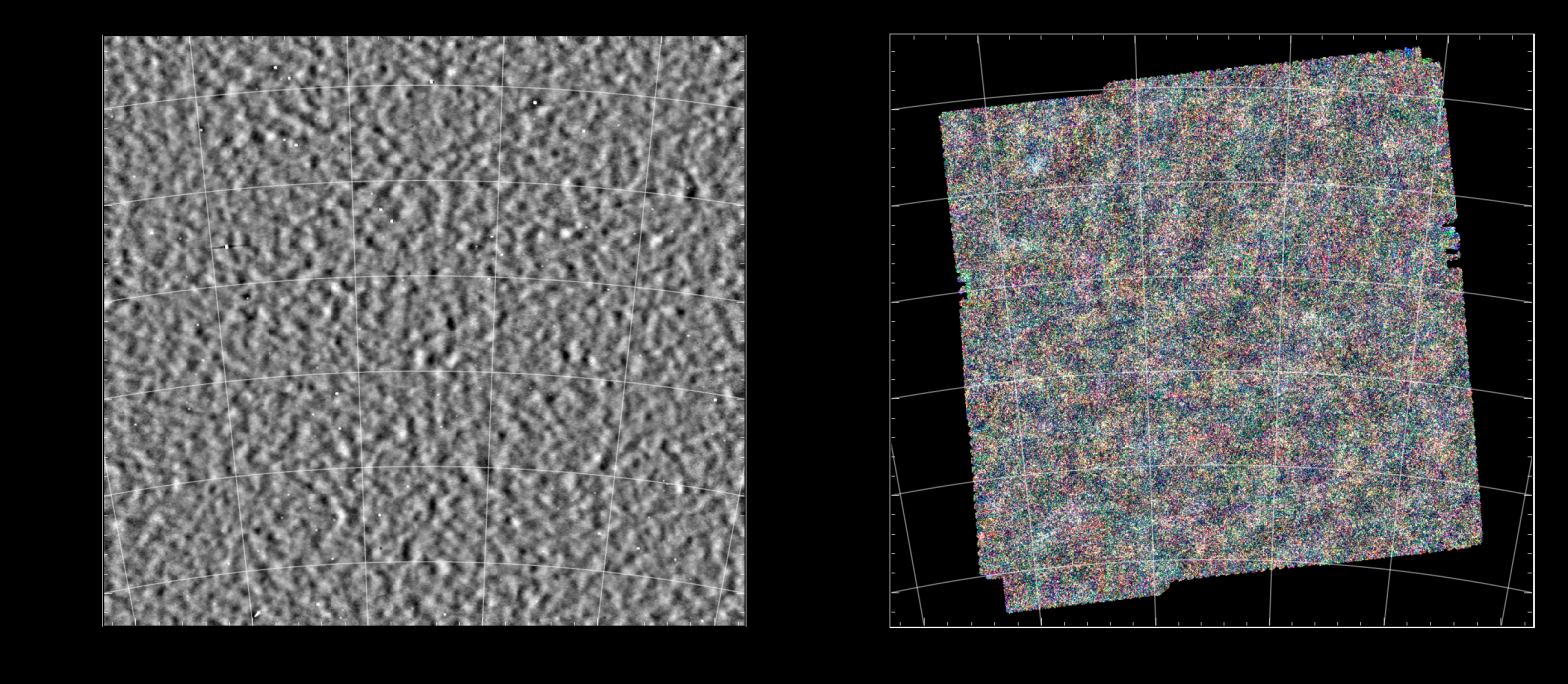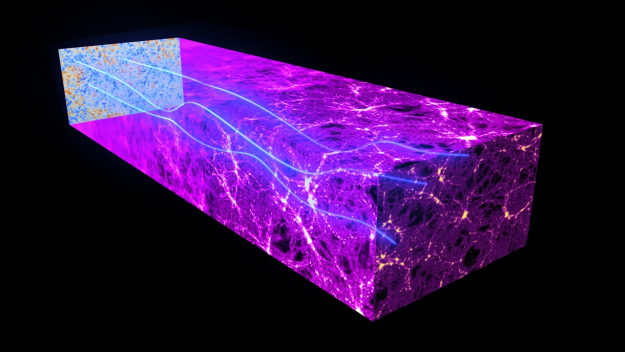| Basic Information | |
| What is this? | On the right, thousands of distant galaxies,and on the left, subtle variations in the light from the early Universe |
| Where is it in the sky? | In a seemingly empty part of the sky in the southern hemisphere |
| How big is it? | The patch of sky shown is around 10 degrees across, which is 20 times the diameter of the Full Moon |
| How far away is it? | The galaxies on the right are billions of light years away, seen as they were billions of years ago. The image seen on the left shows light which was emitted 400,000 years after the Big Bang |
| What do the colours represent? | On the left, the light and dark regions are tiny variations in the light from the early Universe. On the right, the tiny dots are galaxies |
Downloads
See this object in:
Working along with a telescope located at the South Pole, Herschel has helped cosmologists make the first detection of subtle alterations to light from the Big Bang. These subtle variations, known as B-modes, will be a key part of the puzzle in understanding the first moments of the Universe.
Light from the early Universe has been travelling through space for almost fourteen billion years, and is seen today as the Cosmic Microwave Background, or CMB. First detected in 1965, studying this relic of the Big Bang is the primary mission of ESA’s Planck satellite. But while Planck has mapped the entire sky, ground-based telescopes have been studying small patches of the sky at very high resolution. One such telescope is the South Pole Telescope, based unsurprisingly at the South Pole.
The most obvious feature in the CMB is the pattern of hot and cold spots, caused by tiny variations in the density of the Universe when it was just 380,000 years old – a tiny fraction of its current age of 13.8 billion years. These fluctuations are tiny, at just 1/100,000 of the average, but contain a wealth of information about the composition and evolution of the Universe.
There are other ways of studying the early Universe, one of which is studying the “polarisation” of the light which makes up the CMB. This polarisation comes in two types of pattern on the sky: “E-modes” and “B-modes”. Of these two only the E-modes have been detected previously, and complement our existing knowledge.
Of much more interest to cosmologists, however, are the B-modes. One source of this pattern of polarisation is a period known as “inflation”, the first tiny fraction of a second after the Big Bang when the Universe expanded at an extraordinary rate. Such a signal is incredibly faint, and is considered by many to be the next big discovery in cosmology.
The other source of B-modes is the distortion of the light by all the matter is passes on its travels through the Universe. The gravitational pull of immense clusters of galaxies, including their huge reservoirs of dark matter, warps and twists the CMB light through a process known as gravitational lensing. The effect is so small that astronomers, such as those at the South Pole Telescope (SPT), have to be very careful to rule out spurious signals from the telescope and instruments themselves.
“This measurement was made possible by a clever and unique combination of ground-based observations from the South Pole Telescope – which measured the light from the Big Bang – with space-based observations from Herschel, which is sensitive to the galaxies that trace the dark matter which caused the gravitational lensing,” says Joaquin Vieira, of the California Institute of Technology and the University of Illinois at Urbana-Champaign, who led the Herschel survey used in the study.
By comparing the Herschel images, which show the distribution of material spread through the Universe, with the B-mode polarisation detected by the SPT, the team has been able to make the first ever detection of this particular pattern of polarisation.
“Polarisation holds the key to the future of gravitational lensing studies of the CMB,” comments Duncan Hanson from McGill University in Montréal, Canada, who is first author of the paper reporting the discovery. “This field is in its early stages right now, but as we collect more and more data, we will be able to study the large-scale distribution of matter with ever greater precision.”

Detailed Information
Hanson et al. (2013) Physical Review Letters, 111, 141301 “Detection of B-mode Polarization in the Cosmic Microwave Background with Data from the South Pole Telescope”
- Herschel helps find elusive signals from the early Universe (ESA portal)
- Herschel throws new light on oldest cosmic light (ESA Science & Technology)


